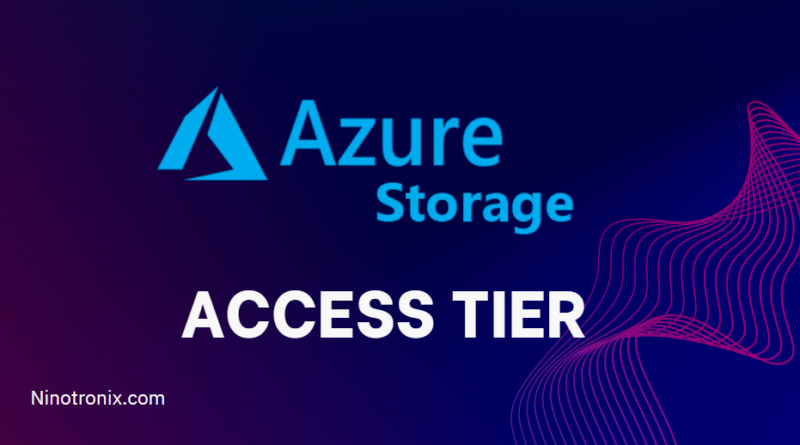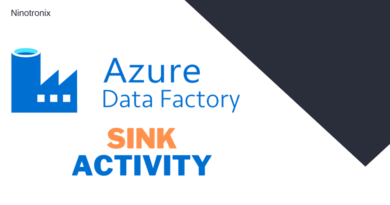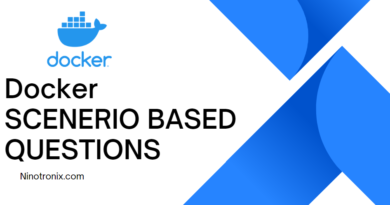Understanding Azure Access Tiers: A Comprehensive Guide to Hot, Cool, and Archive Tiers
Azure Blob Storage is a cost-effective way to store and manage unstructured data, such as images, videos, and documents. Blob Storage offers different access tiers to provide customers with flexibility in choosing the right storage class for their data. This article explains Azure Access Tiers in detail, including their different types, use cases, and pricing.
What is an Azure Access Tier? Access tiers in Azure Blob Storage refer to the frequency at which data is accessed and the cost of storing data based on that frequency. Each access tier represents a different storage class with different performance and price levels.
Azure Blob Storage offers three access tiers: Hot, Cool, and Archive. Each access tier has different pricing, storage durability, and retrieval times. The choice of access tier depends on the frequency of data access, the expected retrieval time, and the cost of storage.
- Hot Access Tier – The Hot Access Tier is designed for frequently accessed data that requires low latency access times. This access tier offers the highest performance and the highest storage cost. The Hot Access Tier is ideal for data that is frequently accessed, such as data used for streaming media, interactive web applications, or real-time analytics.
The Hot Access Tier offers the following benefits:
- The highest performance for frequently accessed data.
- Instantaneous access to data.
- Lower data retrieval costs compared to other access tiers.
- Support for all Blob Storage types, including block blobs, append blobs, and page blobs.
The Hot Access Tier offers a service-level agreement (SLA) of 99.9% availability for read and write operations.
- Cool Access Tier -The Cool Access Tier is designed for infrequently accessed data that can tolerate slightly higher access times. This access tier offers lower storage costs compared to the Hot Access Tier but with slightly higher data retrieval costs. The Cool Access Tier is ideal for data that is not frequently accessed but needs to be stored for a long time, such as backups, archives, and disaster recovery data.
The Cool Access Tier offers the following benefits:
- Lower storage costs compared to the Hot Access Tier.
- A lower data retrieval cost compared to the Archive Access Tier.
- Support for block blobs and append blobs only.
The Cool Access Tier offers a service-level agreement (SLA) of 99% availability for read and write operations.
- Archive Access Tier – The Archive Access Tier is designed for data that is rarely accessed and can tolerate long retrieval times. This access tier offers the lowest storage cost compared to the other access tiers but with the highest data retrieval costs. The Archive Access Tier is ideal for long-term data retention, such as legal documents, financial records, and healthcare records.
The Archive Access Tier offers the following benefits:
- The lowest storage cost compared to other access tiers.
- Lower data retrieval costs compared to the Hot and Cool Access Tiers.
- Support for block blobs only.
- The longest data retrieval time compared to the other access tiers.
The Archive Access Tier offers a service-level agreement (SLA) of 99% availability for read operations only.
How to Choose the Right Access Tier?
Choosing the right access tier for your Azure Blob Storage data is crucial to optimize performance, manage costs, and ensure data availability. In this article, we will discuss the key factors you need to consider when choosing the right access tier for your data.
What is an Azure Access Tier? Azure Blob Storage provides three access tiers – Hot, Cool, and Archive. These access tiers determine the performance, durability, and pricing for storing and retrieving your data. Each access tier is designed for different types of data and access patterns, and it’s important to understand these differences to choose the right one.
- Access Frequency The frequency of data access is the primary factor in determining which access tier to choose. If you have data that is frequently accessed, such as user-generated content, website assets, or real-time analytics data, you should choose the Hot Access Tier. This tier offers low latency access times and is optimized for frequent access.
If you have data that is infrequently accessed, such as backup data, logs, or disaster recovery data, you should choose the Cool Access Tier. This tier provides lower storage costs than the Hot Access Tier and is optimized for data that is accessed less frequently.
Finally, if you have data that is rarely accessed, such as legal documents, compliance data, or historical archives, you should choose the Archive Access Tier. This tier offers the lowest storage costs but has the longest data retrieval time of all the tiers.
- Retrieval Time The retrieval time of your data is another key factor in choosing the right access tier. If your data needs to be retrieved quickly, you should choose the Hot Access Tier. This tier provides instant access to your data and is ideal for data that requires low latency access times.
If your data can tolerate slightly longer retrieval times, you should choose the Cool Access Tier. This tier provides lower storage costs than the Hot Access Tier but has slightly longer retrieval times.
Finally, if your data can tolerate the longest retrieval times, you should choose the Archive Access Tier. This tier provides the lowest storage costs but has the longest retrieval time of all the tiers.
- Storage Cost The storage cost is another key factor in choosing the right access tier. The Hot Access Tier has the highest storage cost but provides the best performance for frequently accessed data. The Cool Access Tier has a lower storage cost than the Hot Access Tier but has slightly higher retrieval costs.
Finally, the Archive Access Tier provides the lowest storage cost but has the highest retrieval costs of all the tiers. If you have data that is rarely accessed and can tolerate long retrieval times, this may be the most cost-effective option for your data.
- Data Type The type of data you have is also an important consideration when choosing the right access tier. The Hot and Cool Access Tiers support all types of blobs, including block blobs, append blobs, and page blobs. The Archive Access Tier only supports block blobs, which are designed for large, sequential data writes.
If your data consists of block blobs, you can choose any of the three access tiers. However, if your data consists of append blobs or page blobs, you should choose the Hot or Cool Access Tiers.
- Data Lifecycle Finally, you need to consider the lifecycle of your data when choosing the right access tier. Azure Blob Storage provides lifecycle management policies that allow you to automate the movement of data between access tiers based on its age or other criteria.
For example, you could set up a policy to move data from the Hot Access Tier to the Cool Access Tier after a certain number of days of inactivity. Similarly, you could set up a policy to move data from the Cool Access Tier to the Archive Access Tier after a certain number of months.
Conclusion Choosing the right access tier for your Azure Blob Storage data is critical to ensure optimal performance,




